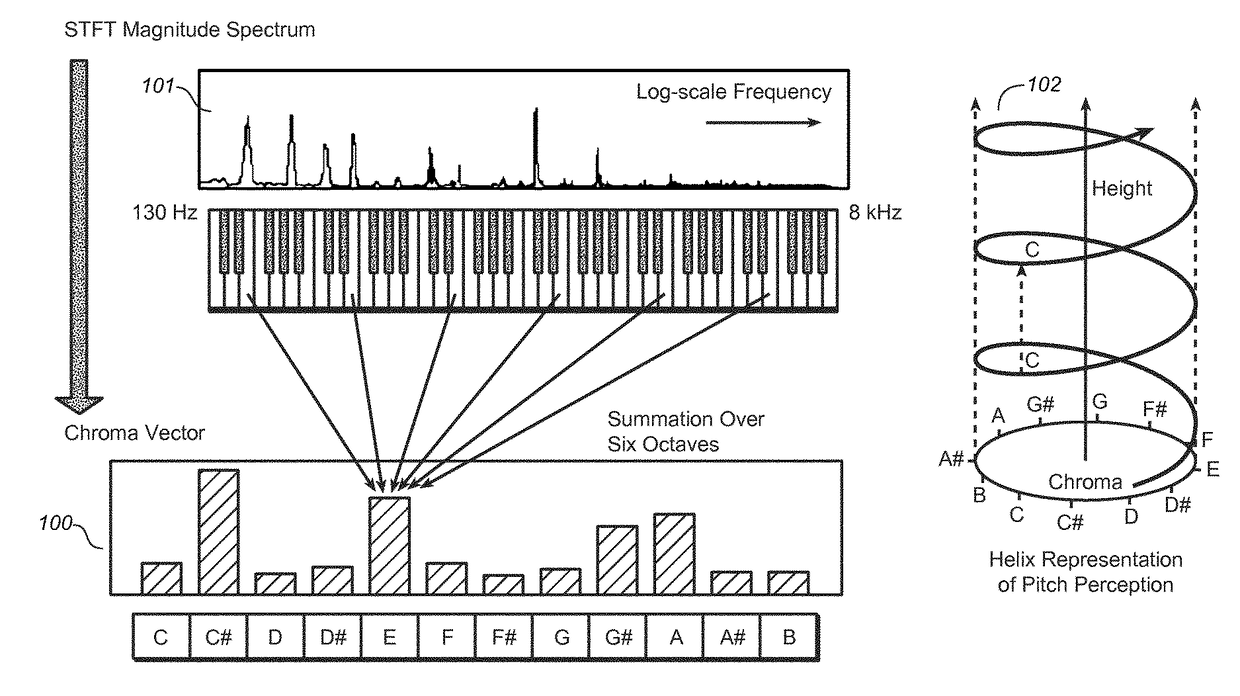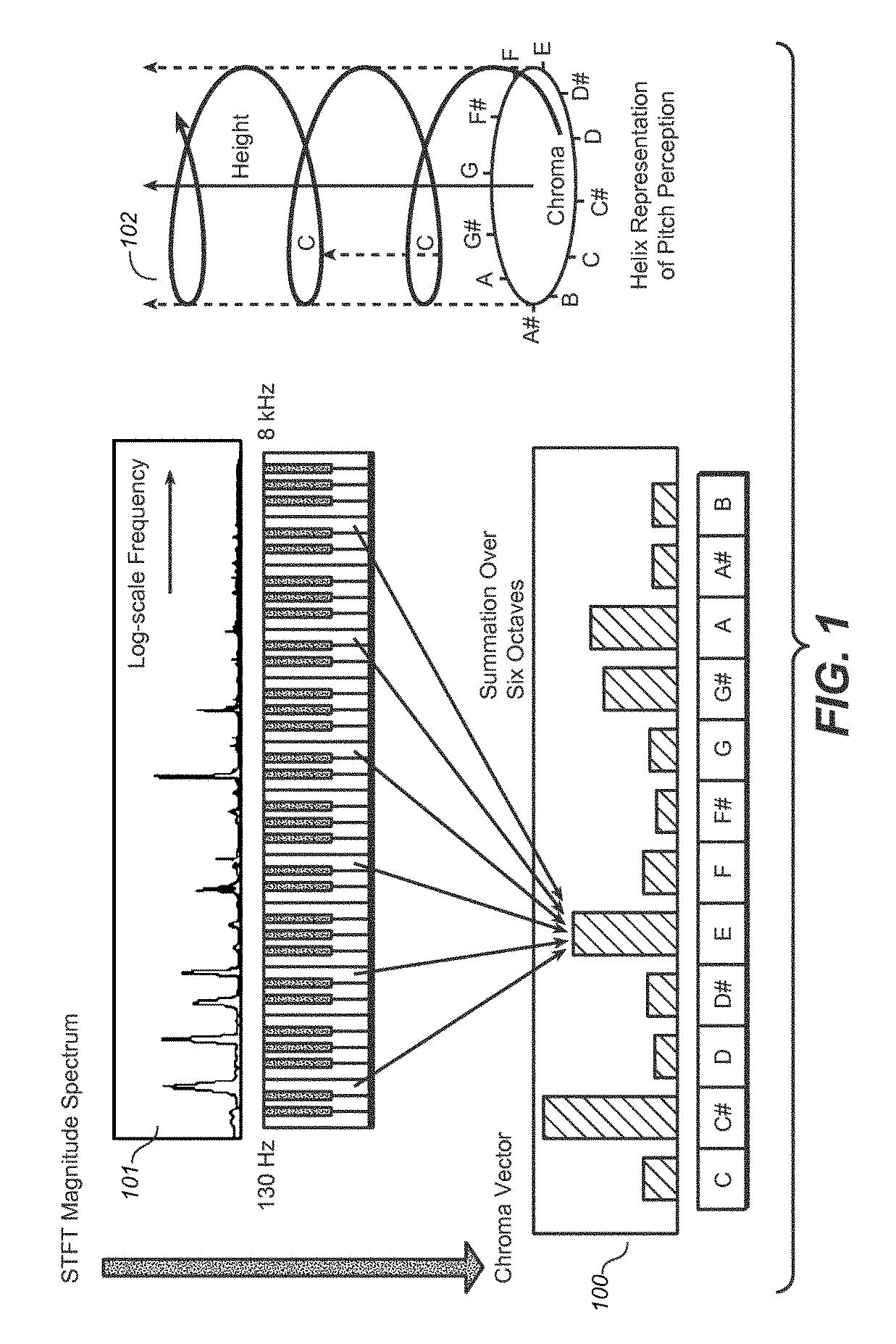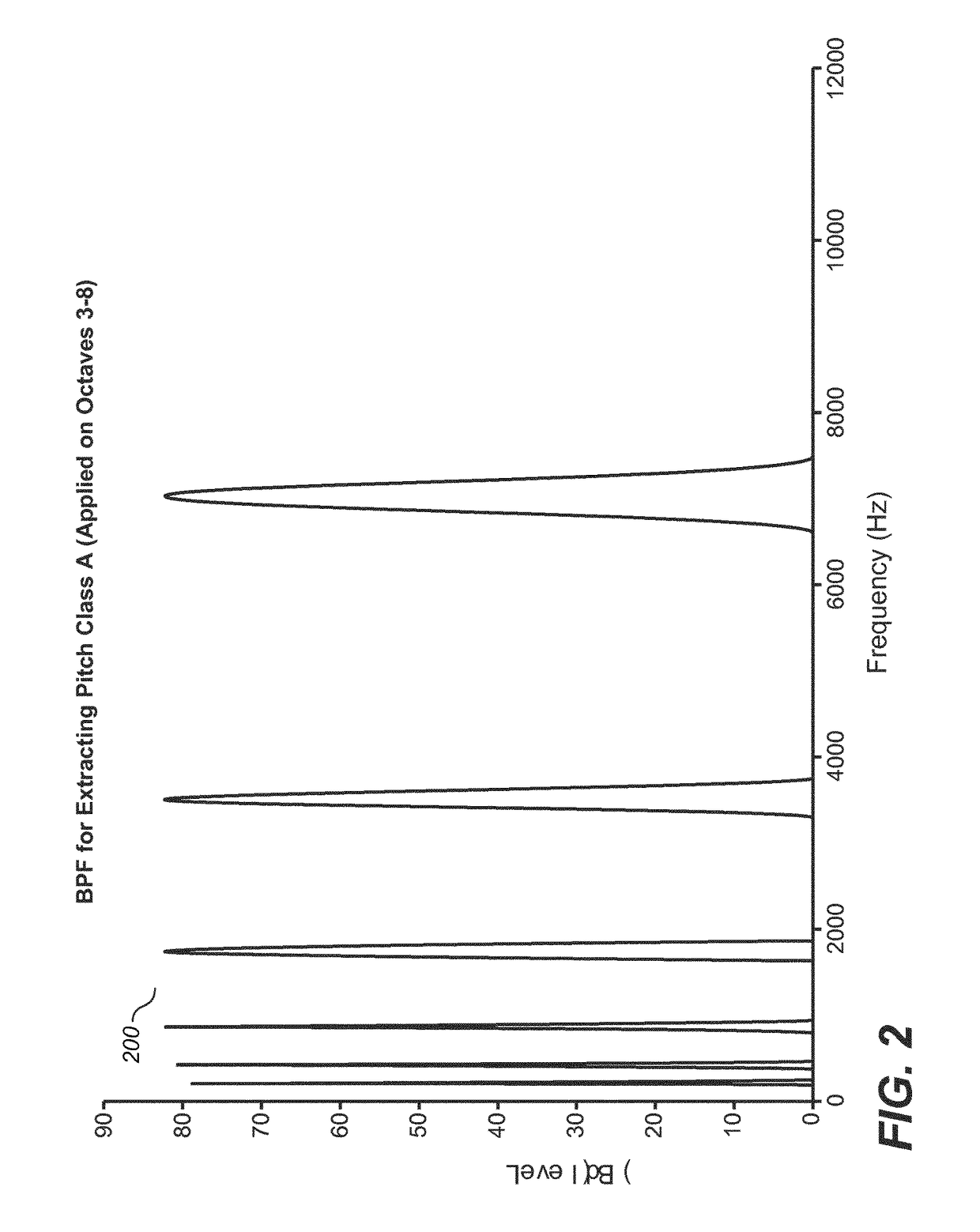Enhanced chroma extraction from an audio codec
a chroma extraction and audio codec technology, applied in the field of music information retrieval methods and systems, can solve the problems of navigating through available music libraries, affecting the accuracy of chroma extraction, and requiring significant computational complexity to determine a chromagram, and achieve the effect of low computational complexity
- Summary
- Abstract
- Description
- Claims
- Application Information
AI Technical Summary
Benefits of technology
Problems solved by technology
Method used
Image
Examples
Embodiment Construction
[0041]Today's storage solutions have the capacity to provide huge databases of musical content to users. Online streaming services like Simfy offer more than 13 million songs (audio files or audio signals), and these streaming services are faced with the challenge of navigating through large databases, and to select and stream appropriate music tracks to their subscribers. Similarly, users with a large personal collection of music stored in a database have the same problem of selecting appropriate music. In order to be able to handle such large amount of data, new ways of discovering music are desirable. In particular, it may be beneficial that a music retrieval system proposes similar kinds of music to a user when the user's preferred taste of music is known.
[0042]In order to identify musical similarity, numerous high-level semantic features such as tempo, rhythm, beat, harmony, melody, genre and mood may be required and may need to be extracted from the musical content. Music-Info...
PUM
 Login to View More
Login to View More Abstract
Description
Claims
Application Information
 Login to View More
Login to View More - R&D
- Intellectual Property
- Life Sciences
- Materials
- Tech Scout
- Unparalleled Data Quality
- Higher Quality Content
- 60% Fewer Hallucinations
Browse by: Latest US Patents, China's latest patents, Technical Efficacy Thesaurus, Application Domain, Technology Topic, Popular Technical Reports.
© 2025 PatSnap. All rights reserved.Legal|Privacy policy|Modern Slavery Act Transparency Statement|Sitemap|About US| Contact US: help@patsnap.com



